July 25, 2016
This article is reprinted from the Spring/Summer 2016 issue of the Members’ Magazine(link is external).
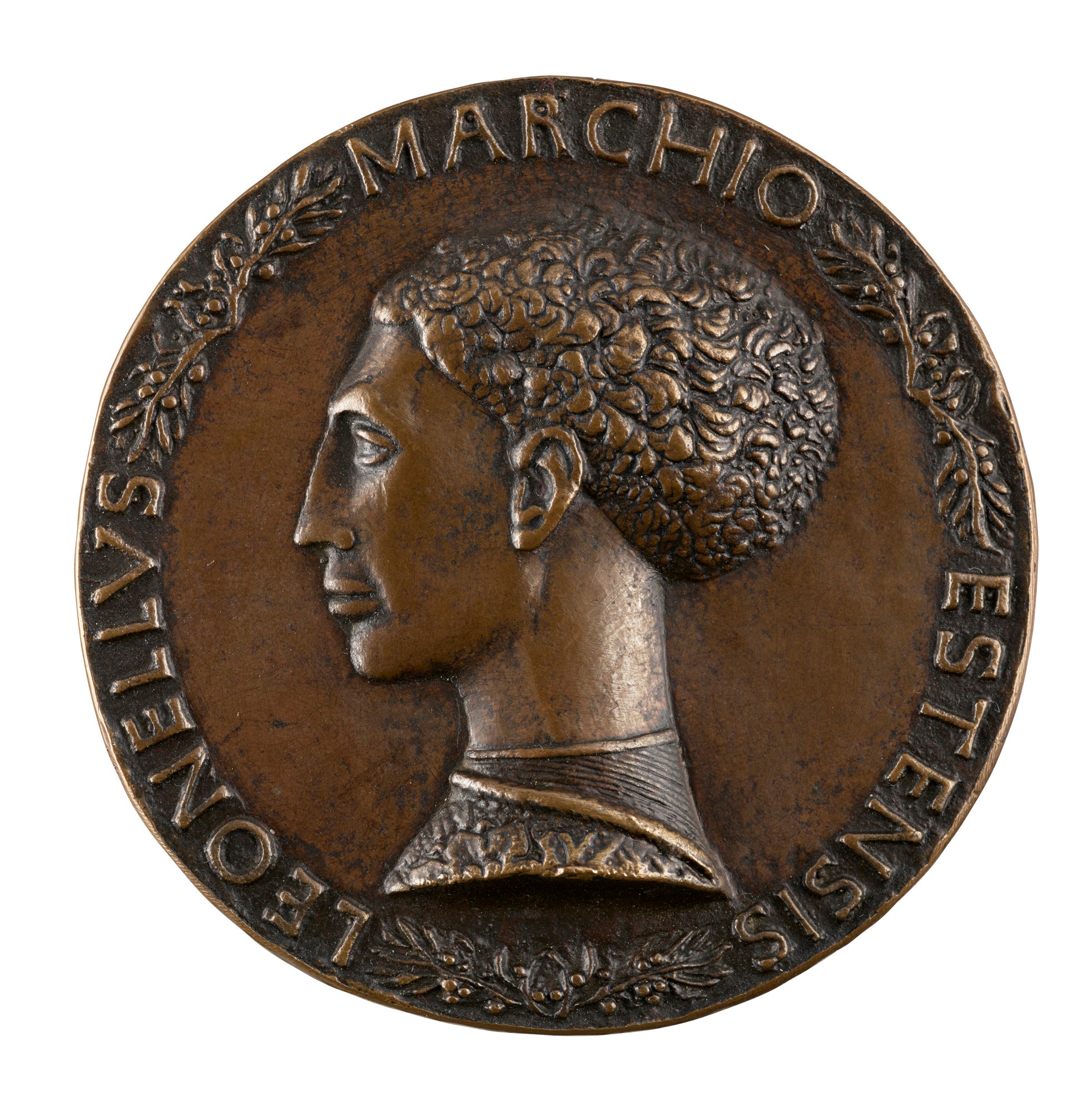
The Frick Collection is pleased to announce a gift from the Stephen K. and Janie Woo Scher Collection. Considered the world’s greatest private collection of portrait medals, the Scher Collection rivals—and in many cases, surpasses—the holdings of portrait medals in major American museums. An initial gift to the Frick of about four hundred and fifty medals is representative of the collection’s superb quality and breadth. Dating from the fifteenth to the nineteenth centuries, the medals represent the evolution and flourishing of the art form in Italy, France, Germany, the Netherlands, and England, among other regions.
Portrait medals—an art form invented during the Italian Renaissance—are central to the history of European portraiture from the fifteenth century onward. Less familiar to modern museumgoers than the arts of painting and sculpture, these small-scale objects typically feature a portrait on one side (the obverse) and, on the reverse, an allegorical or emblematic image representing aspects of the sitter’s biography, achievements, or beliefs. Commemorating individuals of the highest status and accomplishment, portrait medals disseminated the sitter’s power, glory, and identity widely, but, at the same time, intimately. These exquisitely crafted objects were produced in multiples and were small enough to travel easily to places far away from the artist and sitter.
 Masters of the medallic arts were often well-known painters and sculptors. Antonio di Puccio Pisano, called Pisanello, one of the most celebrated Italian painters of the fifteenth century, is traditionally credited as the inventor of the portrait medal as an art form. His medal of Leonello d’Este, like most portraits of the time, emulates ancient Roman coins by presenting the sitter in profile. (Unlike coins, medals were not intended to circulate as currency and thus are not bound to specifications of weight and material.) Allegorical images on the reverse of medals were meant to be interpreted by their collectors. In the case of the Leonello d’Este medal, the reverse depicting two men carrying baskets of olive branches symbolizes the blessings of peace, alluding to the good governance of Leonello, who served as marquis of Ferrara from 1441 to 1450. The inscription on the reverse declares the medal to be “the work of Pisanello the painter.” Obverse portraits could be combined with different reverses, so that an individual could highlight various aspects of his or her persona by commissioning multiple medals. For example, a second medal of Leonello by Pisanello in the Scher Collection depicts on the reverse an allegorical image of a head with three faces; a third shows a lion (a play on Leonello’s name) being taught to sing. These have been interpreted to celebrate, respectively, the marquis’s prudence in governing and his happy marriage.
Masters of the medallic arts were often well-known painters and sculptors. Antonio di Puccio Pisano, called Pisanello, one of the most celebrated Italian painters of the fifteenth century, is traditionally credited as the inventor of the portrait medal as an art form. His medal of Leonello d’Este, like most portraits of the time, emulates ancient Roman coins by presenting the sitter in profile. (Unlike coins, medals were not intended to circulate as currency and thus are not bound to specifications of weight and material.) Allegorical images on the reverse of medals were meant to be interpreted by their collectors. In the case of the Leonello d’Este medal, the reverse depicting two men carrying baskets of olive branches symbolizes the blessings of peace, alluding to the good governance of Leonello, who served as marquis of Ferrara from 1441 to 1450. The inscription on the reverse declares the medal to be “the work of Pisanello the painter.” Obverse portraits could be combined with different reverses, so that an individual could highlight various aspects of his or her persona by commissioning multiple medals. For example, a second medal of Leonello by Pisanello in the Scher Collection depicts on the reverse an allegorical image of a head with three faces; a third shows a lion (a play on Leonello’s name) being taught to sing. These have been interpreted to celebrate, respectively, the marquis’s prudence in governing and his happy marriage.
The French seventeenth-century artist Guillaume Dupré is among the most celebrated medalists of all time. In addition to making medals, he was also a cannon founder and served as first sculptor to Louis XIII. Dupré advanced the technique of medals casting (pouring molten metal into a mold) to an unparalleled level of refinement and detail. In his medal of Louis XIII, which features on the reverse a portrait of the king’s wife, Anne of Austria, the artist captures with breathtaking detail the king’s ruff, the queen’s standing lace collar and jewels, and their distinctively styled hair. This example, like Dupré’s other cast medals, approaches the extreme precision achieved through striking, a technique developed primarily for minting coins that requires specialized machinery and physical force. The loop attached to the top of the medal suggests it was suspended for display or perhaps worn by its owner.
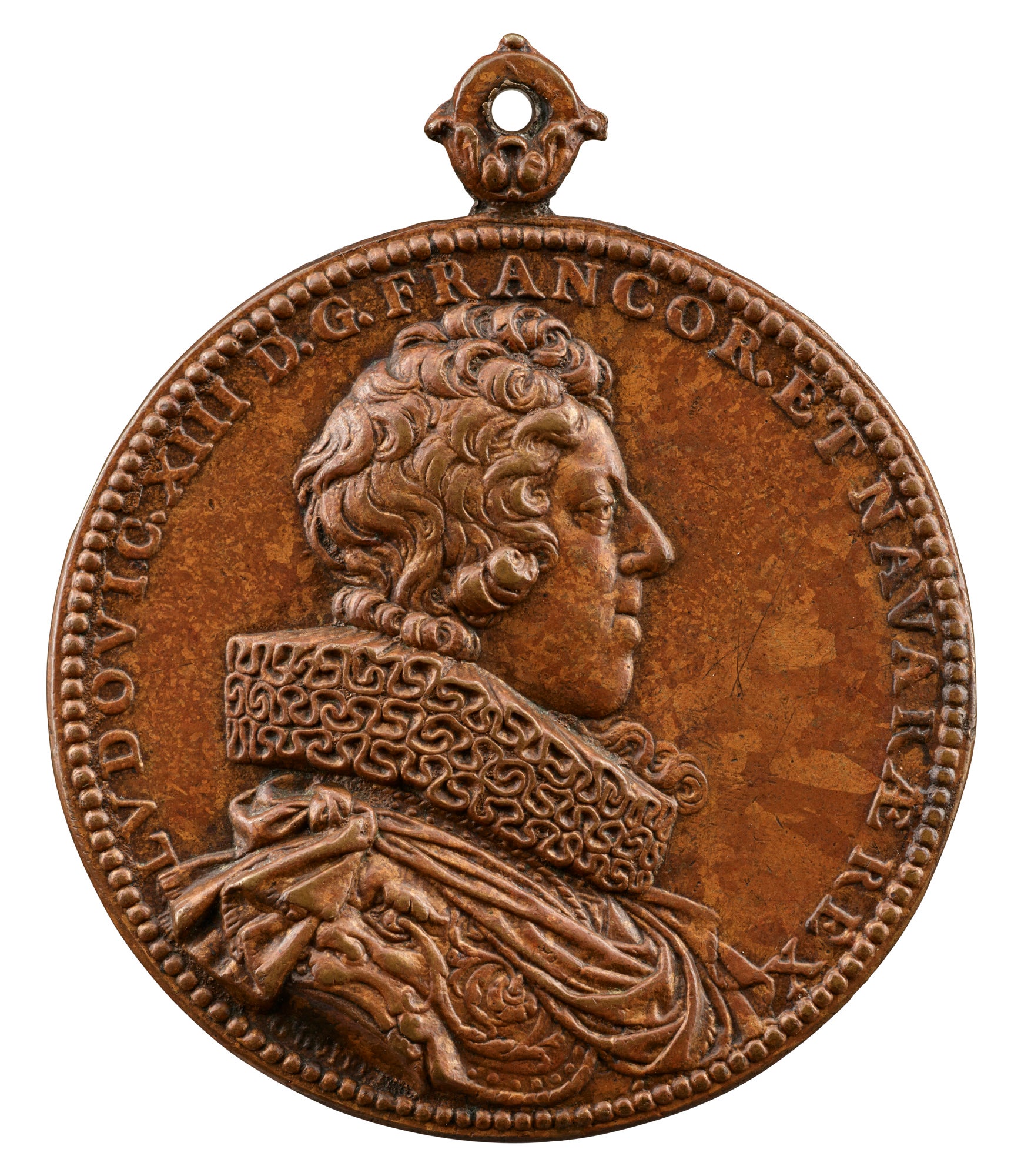
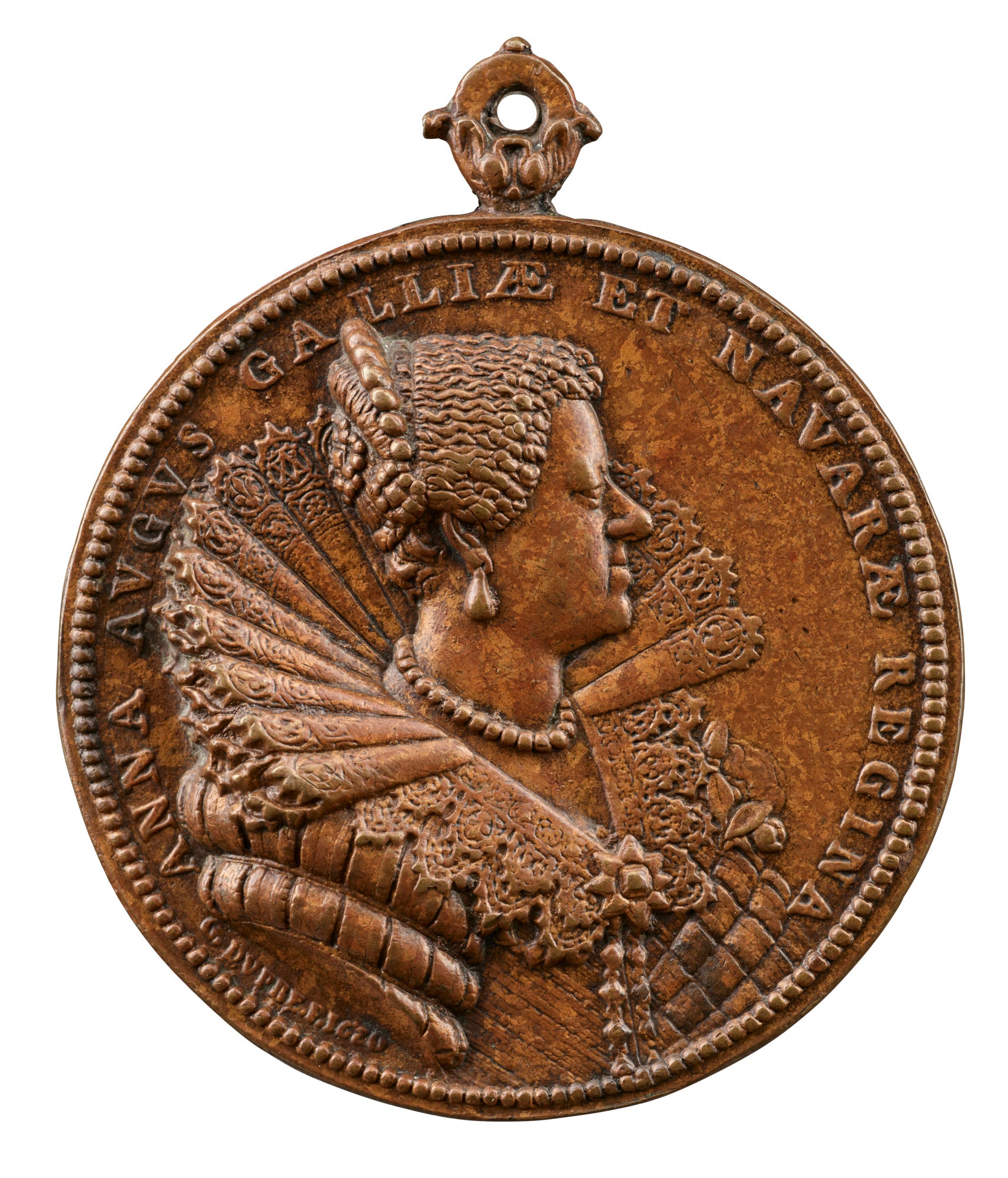
Medals were often produced to acknowledge specific events or milestones, such as marriages, deaths, coronations, and military victories. A silver medal depicting the enthroned and crowned William III and Mary II of England, celebrates their coronation in Amsterdam in 1689, the date inscribed below the figures. The unknown artist who cast this medal included charming details such as the tassels at the corners of the cushions on which the figures rest their feet and, on the reverse, the plumes adorning the hats of the three members of the City Guard of Amsterdam, whose names are inscribed around the perimeter.
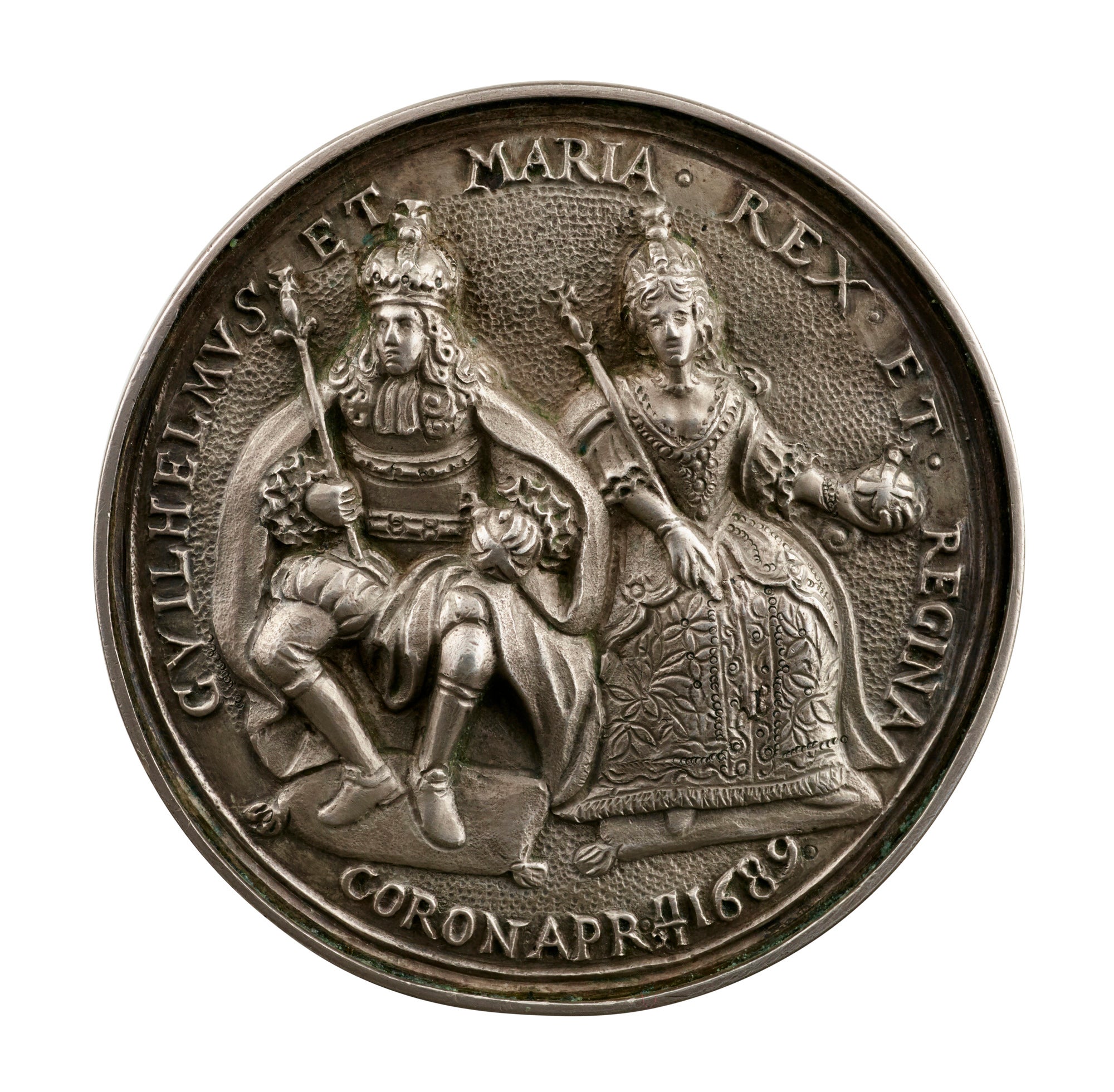
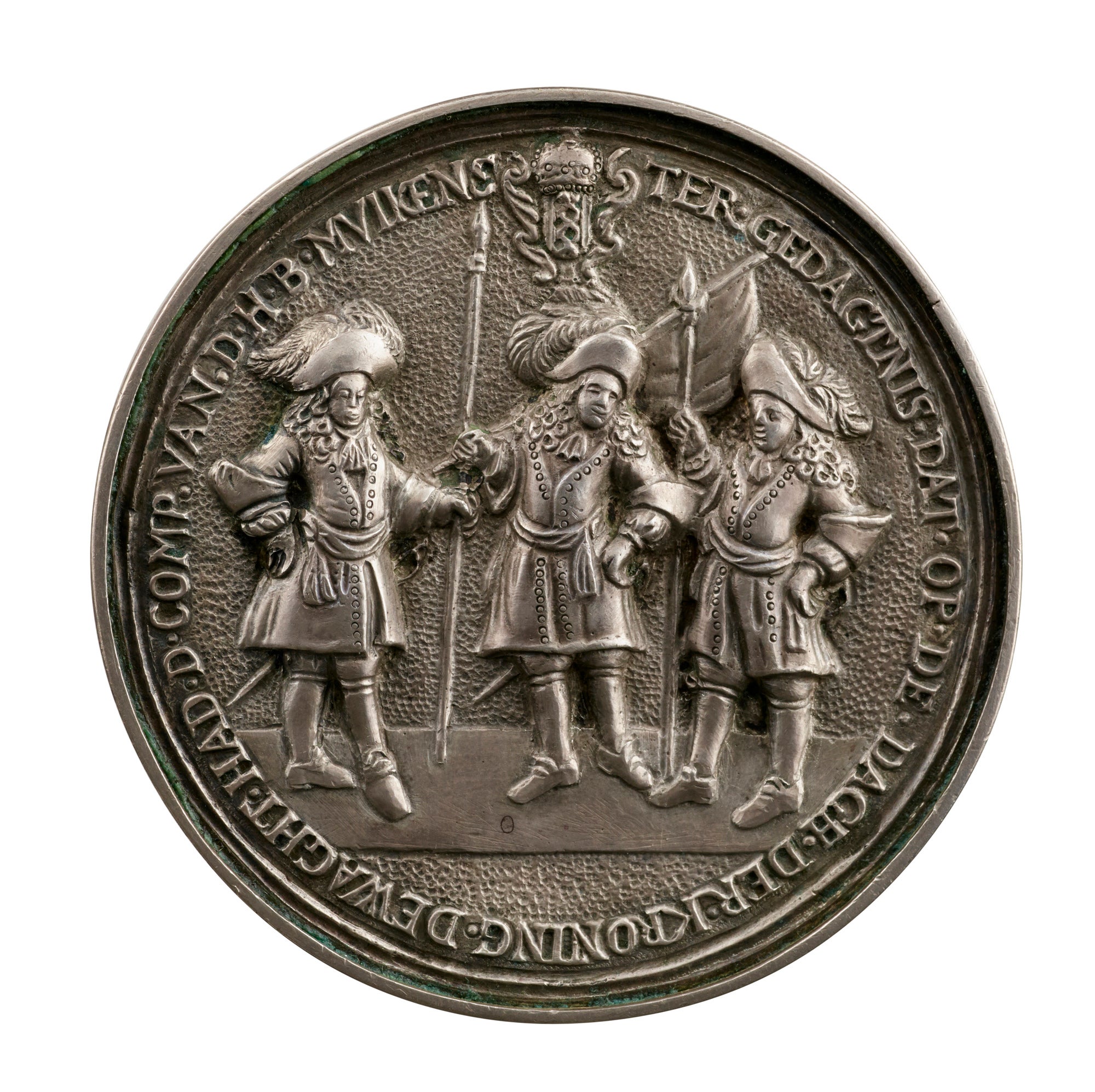
By the seventeenth century, medals were not limited to commemorating only the royal and aristocratic classes. Individuals of sufficient means could purchase ready-made medals depicting a generic event, such as an anniversary or marriage, then personalize them by inscribing their names and biographical details.
The material from which a medal is formed (lead, bronze, silver, or gold) makes it both durable and precious. Combining metals, in particular covering bronze or silver with gold in whole or in part, can achieve dazzling visual effects. In the case of the parcel-gilt bronze medal commemorating the death of George I of England, the contrast between gold and bronze heightens the sculptural relief of the portrait bust and emphasizes the monumentality of the figure despite the diminutive size of the medal, which is just over one inch in diameter. On the reverse, an allegorical figure supporting a medallic portrait of George II, the late king's heir, serves to illustrate the continuity of the royal lineage and to emphasize the importance of the portrait medal as a means of commemoration.
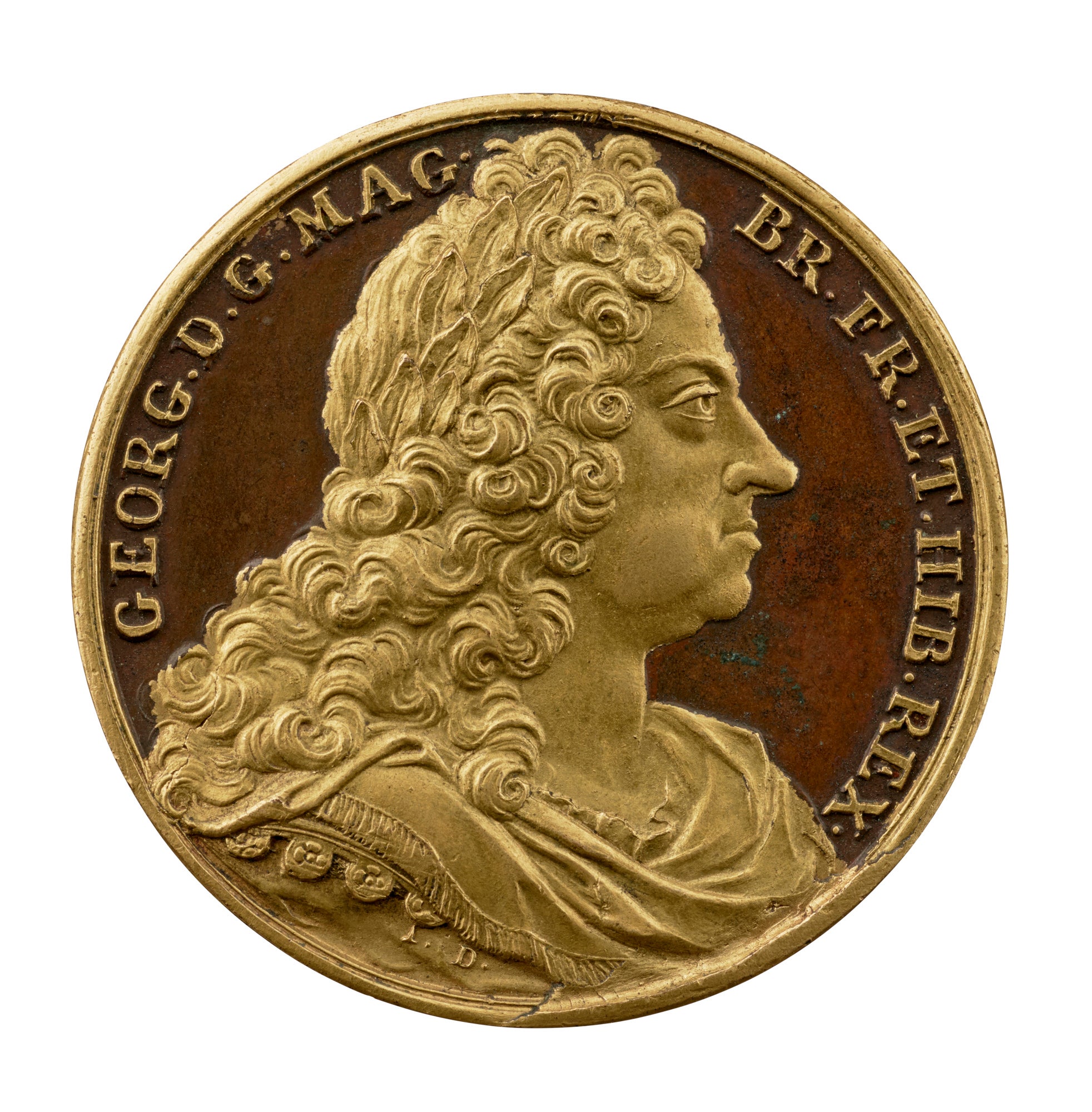
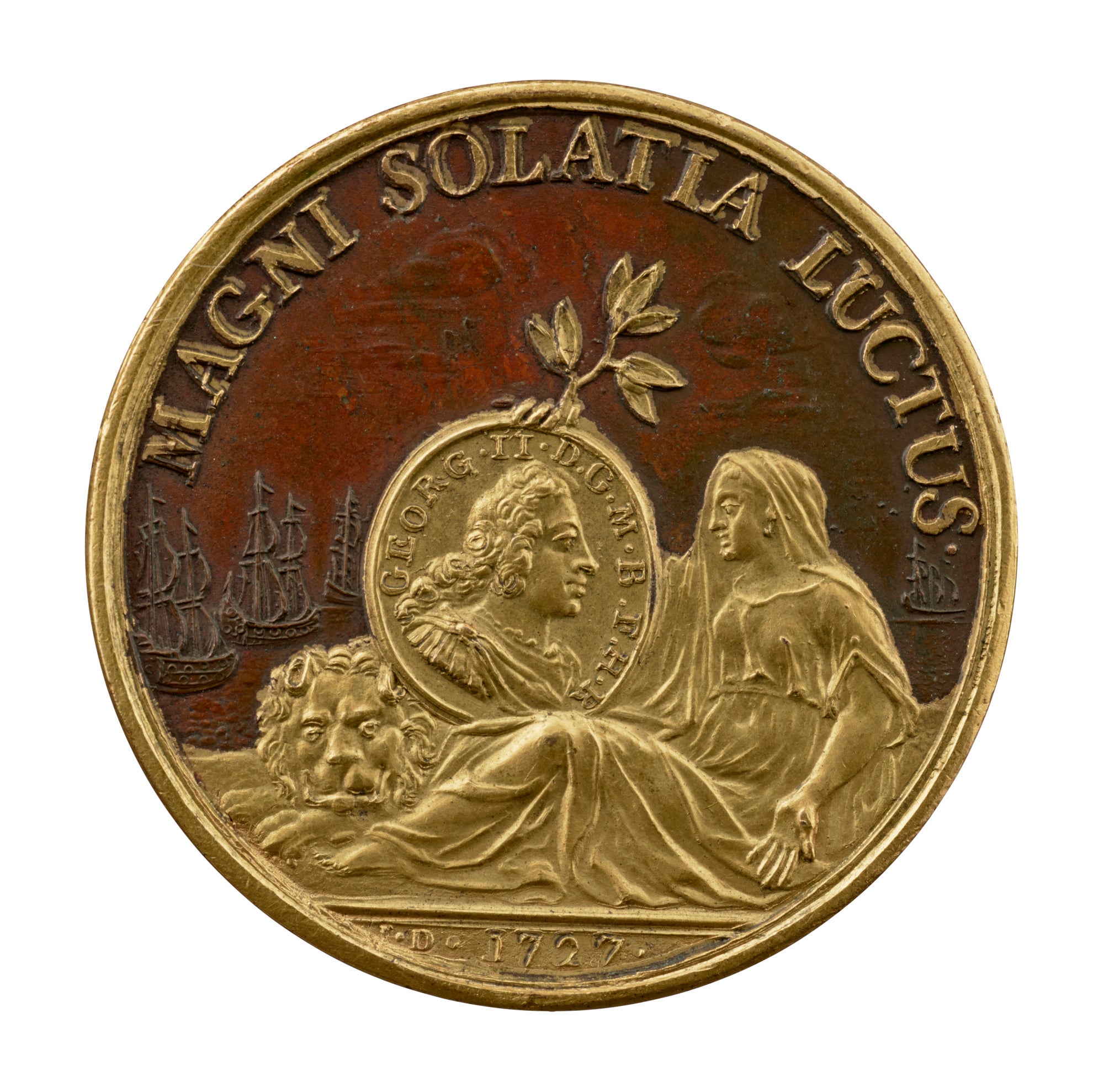
Death is a constant presence in portrait medal imagery. The memento mori was for centuries a ubiquitous reminder of the inevitability of death, and reverses feature countless representations of the passage of time and impermanence of life, from skulls to hourglasses to children blowing soap bubbles destined to burst. The boldly simple skull and bones on the reverse of a medal inscribed with the name Michael Leonhard Maier is a haunting counterpart to his portrait on the other side. The visual impact of this reverse derives not only from its simplicity, but from its high sculptural relief as well. These common reminders of mortality also emphasize that portrait medals both commemorate and immortalize their sitters: the sculpted image endures long after the body perishes.
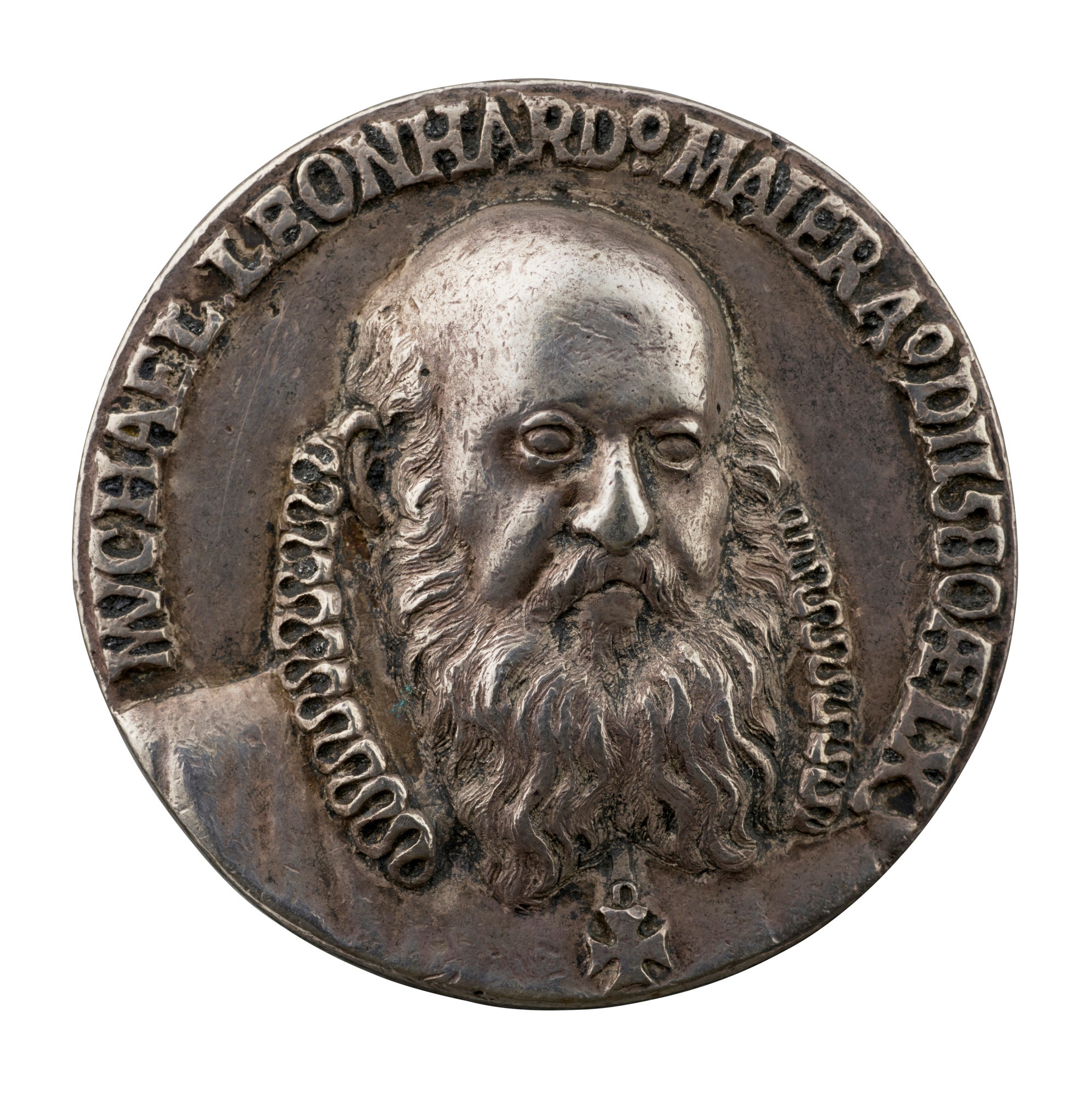
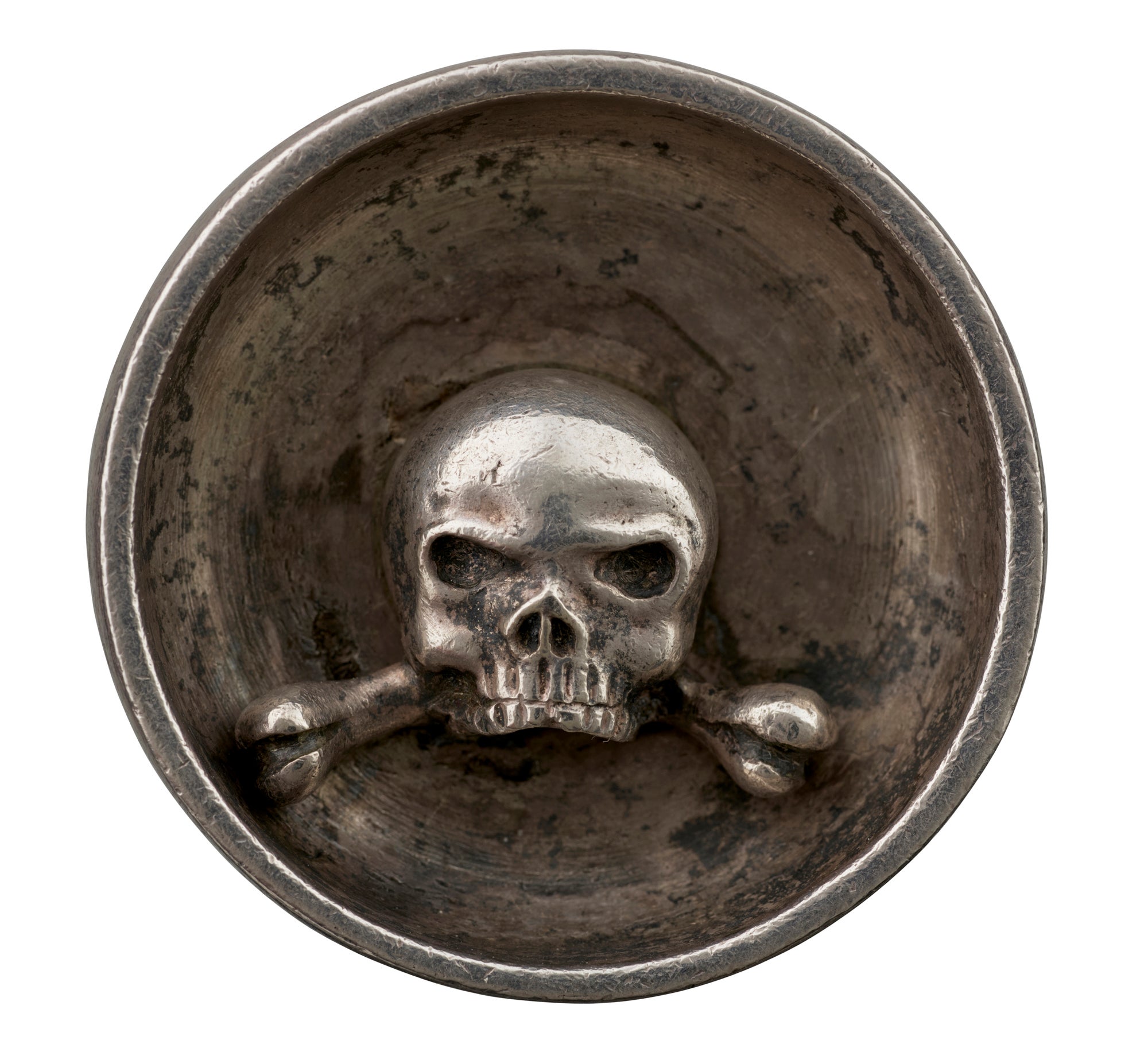
 The medallion is a designation given to medals of a distinctly larger size, and the gilt-bronze example depicting the Empress Josephine, the first wife of Napoleon Bonaparte, is a tour de force of the kind of modern sculptural portraiture explored extensively by the nineteenth-century French artist Pierre-Jean David d’Angers. Lavishing attention on the decorative details of his regal sitter’s adornments, David d’Angers activates her by playing with the conventional profile portrait: the position of her lace collar, neck, and shoulders indicates that she has just turned her face away from the viewer; indeed, her dangling gem-encrusted earring seems still to be swinging just slightly to the right.
The medallion is a designation given to medals of a distinctly larger size, and the gilt-bronze example depicting the Empress Josephine, the first wife of Napoleon Bonaparte, is a tour de force of the kind of modern sculptural portraiture explored extensively by the nineteenth-century French artist Pierre-Jean David d’Angers. Lavishing attention on the decorative details of his regal sitter’s adornments, David d’Angers activates her by playing with the conventional profile portrait: the position of her lace collar, neck, and shoulders indicates that she has just turned her face away from the viewer; indeed, her dangling gem-encrusted earring seems still to be swinging just slightly to the right.
In many ways, the Frick is the perfect home for the Scher medals, as they cohere with Henry Clay Frick’s sustained interest in the art of portraiture. The medals also contribute to building a fuller art historical context for the permanent collection’s paintings, sculptures, decorative arts, and works on paper. Significantly, the portrait medal’s inventor, Pisanello, is represented in the Frick’s permanent collection by a mid-fifteenth-century drawing that mirrors the same concentrated visual study he used to capture the likenesses of his portrait medal sitters. Together, Pisanello’s drawing and medals demonstrate the range of his interest in depicting the world around him.
The Frick’s holdings find poignant and powerful complements and counterpoints in the Scher medals. Portrait medals created for the French court during the sixteenth century enrich the artistic context in which the Frick’s superlative collection of Limoges enamels were crafted and displayed. The Frick’s painted portraits by Holbein, Titian, and Bronzino are enhanced by comparison to medals made contemporaneously and for the same circles of patrons. For instance, Pietro Aretino, the subject of Titan’s great portrait (ca. 1537) acquired by Frick in 1905, commissioned at least five portrait medals during his life; he purposely used both painted and medallic portraiture to circulate his image in order to promote and ingratiate himself to the rulers of Europe. Several sculptors represented in the Frick’s permanent collection—including Antico, Bertoldo di Giovanni, Jonghelinck, and Soldani—are also acclaimed medallists represented in the Scher Collection. Uniting the Frick sculptures with the Scher medals sparks new ways of looking at these artists’ creative output and the range and complexity of their sculptural invention. Such intersections make clear that the portrait medal played an important (if now less familiar) role in the history of European art.
Dr. Stephen K. Scher, a world-renowned scholar of art history, grew up in New York City. He began collecting portrait medals as a graduate student at the Institute of Fine Arts, New York University, where he earned his Master’s degree. After completing his Ph.D. at Yale University in 1966, he went on to teach art history at Brown University, serving as chairman of the art department from 1972–73. It was during his tenure at Brown that Dr. Scher first met Ian Wardropper, a student in his course on early Netherlandish painting who would go on to become Director of The Frick Collection in 2011. Though it was unknown to them at the time, the relationship between the Schers and the Frick would prove to be a long and rewarding one.
Dr. Scher and his wife, Janie Woo Scher (a chemist and volunteer in the Department of Scientific Research of The Metropolitan Museum of Art) have been longtime supporters of the Frick’s exhibitions and educational programs. The Frick has presented two landmark exhibitions on the art of the portrait medal organized with Dr. Scher: The Currency of Fame (1994) and The Proud Republic: Dutch Medals of the Golden Age (1997). In the decades since, Dr. Scher has given lectures and led numerous seminars and classes at the museum, giving participants the rare opportunity to view and engage with his collection.
The Schers’s gift establishes the Frick as a new center for the study of the medallic arts. Since first collaborating with the Frick to present the Currency of Fame, Dr. Scher has advanced an approach to the study of medals that insists on their significant place in the history of art. Traditionally viewed as a specialized field closer to numismatics than to fine art, the study of the portrait medal has become, through the work of Dr. Scher and others, a burgeoning area of new scholarship. Dr. Scher’s contributions to art history and the gift to the Frick of his and his wife’s personal collection embody the commitment to arts education that led Henry Clay Frick to bequeath his residence and art collection to the public, to encourage and develop the study of the fine arts.
Beginning in May 2017, an exhibition at the Frick featuring selections from the Scher Collection will explore the challenges, complexities, possibilities, and, above all, the intimate beauty and wit of the portrait medal. The exhibition will be accompanied by an illustrated exhibition catalogue including an essay by Aimee Ng; the full collection catalogue will be out next year.
Antonio di Puccio Pisano, called Pisanello (ca. 1395–ca. 1455), Leonello d’Este (obverse and reverse), ca. 1445. Bronze. All objects illustrated are from the Stephen K. and Janie Woo Scher Collection.
Guillaume Dupré (1574 or 1576–1643), Louis XIII (obverse and reverse), 1620. Bronze
Unknown artist, Coronation of William and Mary (obverse and reverse), 1689. Silver
Jean Dassier (1676–1763), George I (obverse and reverse), 1727. Bronze (parcel gilt)
Baldwin Drentwett (1545–active until 1627), Michael Leonard Maier (reverse), 1580. Silver
Pierre-Jean David d’Angers (1788–1856), Empress Josephine Lapagerie Bonaparte, ca. 1804. Gilt bronze